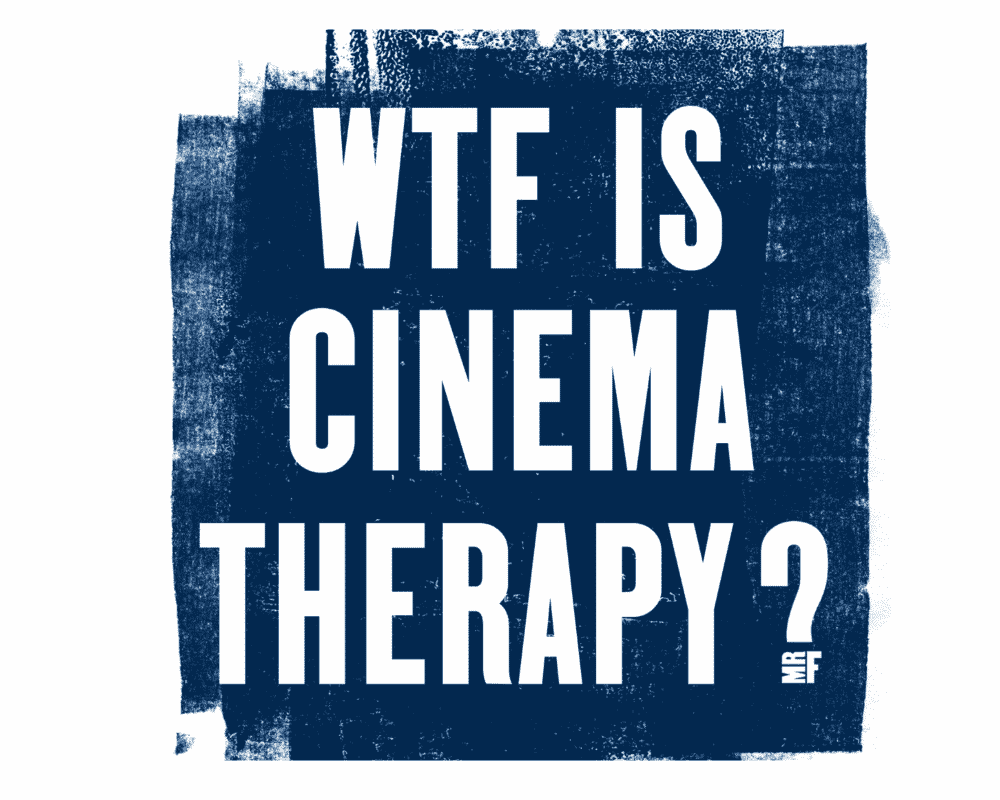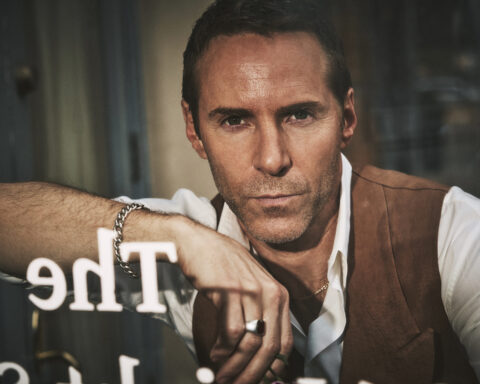Movies can affect us in powerful ways and help us understand ourselves and our society better.
Images, music, dialogue, lighting and sound combine to create characters, stories and themes that trigger senses and emotions and can help us see the challenges in our own world from a different perspective. And this can offer us a gateway into making positive steps to heal, grow and change.
Psychiatrists have found that film can be an important tool to connect with their patients and to help them connect with themselves — in particular those who are reluctant to undergo traditional therapy.
While not all of us choose, or have the means or access, to see a therapist in person to examine and improve our mental wellness, most of us like watching movies. And, while many therapists stress the technique is not a replacement for more comprehensive therapy, it is something that we can practice alone, at home and for free or a few bucks.
The term cinema therapy was coined about 30 years ago, with many more mental health professionals adapting versions of the approach in recent years as they search for innovative ways to incorporate our increasingly media-orientated world into their work.
And it feels particularly appropriate to examine its merits now, with many of us feeling the pressure of the health crisis and physically attending therapy in person becoming more of a challenge.
So we asked three mental health professionals to explain how movies can help us deal with issues from relationship problems to addiction, and asked them to recommend movies to shine a new light on challenges we are facing in our lives.
Dr Nadeem Akhtar is a psychiatrist and Associate Professor at McMaster University, Ontario, Canada, a pioneer of film therapy and other anti-stigma orientated work.

Dr Nadeem Akhtar
We started off creating a group for adolescents who are difficult to engage in therapy, trying to create a group that would engage them better than standard therapeutic models. The standard group is people sitting around the table, there’s jargon, and it’s not particularly accessible for adolescents who can get put off by that.
I’ve also run adult groups and community events where we screen films followed by an expert panel discussion.
The male youth group in particular, aged 18 to 35, are least likely to seek out mental health help. Although that is changing slightly.
Film is important, not just because it gives you a core narrative, but because it makes you feel certain emotions. The process makes it less threatening because, essentially, you’re talking about someone else, even though the narrative and the emotions mirror one’s self. It’s always easier to talk about someone else. It’s a bit like somebody writing into a column and saying, ‘I’m asking for a friend.’
If you look at learning theory, Howard Gardner proposed that there’s probably seven elements of learning that relate to our senses —and all those elements are stimulated by watching a film.
When people begin watching films at home by themselves, I think the core elements they’re going to be looking at are superficial; the technical aspects of the film, whether they like strongly like or dislike characters, whether they can feel the emotion of characters and put themselves in their shoes.
But I think with time when people do this enough, they get to the deeper elements where they start to realize what’s going on with their bodies when they’re watching the film. So they watch a film with mindfulness, looking at what happens to their heart rate, how tense it makes them feel, what happens to their emotional state when they’re watching the film, and then are able to reflect on that.
When we did our group we were looking for a change in resilience, measures of self-esteem and symptom management. When we did enough groups we did some statistical analysis on changes in people’s self-esteem and symptom control over the course of the film therapy group, and by the end they were significantly better.
If people are watching these films at home, they may be facing challenges with socialization and connectivity. And if you’ve got improved self-esteem, you’re more likely to connect with other people. They could be facing challenges in interpersonal or romantic relationships. And if you’ve got improved self-esteem, you can probably judge those relationships better.
Self-therapy and self-guided therapy is an important stepping stone. And I think what you are doing (at Mr Feelgood) is a great idea because it’s part of a wider anti-stigma message and a drive towards opening a dialogue about mental health conditions. The more you open the dialogue and the more the movement normalizes the idea of suffering mental illness, the more likely people are to seek help – there’s lots of good evidence to support that.”
Nadeem Recommends:
ADDICTION: REQUIEM FOR A DREAM
‘Requiem for a Dream’ is a solid film about addiction. It depicts the cycle of decline, the decrease in social connectivity and occupational functioning. It also chronicles recreation becoming dependency. It’s very dark and people find it quite distressing to watch as it creates a lot of strong emotions – and we can dissect why. I think it’s because there’s something about addiction and the lack of control that comes from it, which is extremely frightening. And as a society that extremely frightening emotion has now been transformed into a narrative of repulsion, so people tend to look down on people that are addicted. That fear likely comes from the realization that as humans we could succumb to something so basic as a chemical.
MENTAL ILLNESS: LOVE AND MERCY
In Brian Wilson’s biopic, the themes were about the nitty gritty of schizophrenia. How it starts in young people often with a lot of anxiety and obsessionality, followed by functional change and then people are faced with often terrifying, psychotic experiences. It also spoke to the vulnerability that he suffered as a result of having psychotic illness. Hollywood has been very keen at promoting the idea that people with psychosis are violent, which is very inaccurate. People with psychosis are vulnerable and are at more risk of being subject to violence than anything else. The other thing I think it did really well was promote this idea that when people have a mental health problem, they are still people with a lot of skills a life and a personality, the idea that illness is not the core identity. You could be an absolute genius, but unfortunately mental illness doesn’t spare anyone.
Frann Altman of Erie, Colorado, is a licensed marriage and family therapist with a doctorate in clinical psychology. She is also a writer and long-time SAG member and has used films in her work with couples and addicts.
I believe there are three ways to learn. The first one is, for example, that you put your hand in the fire, and your hand burns and you go, ‘Oh my god, that was really terrible.’ The second way to learn is that you watch someone else put their hand in the fire. And you go, ‘Oh, OK, so he burns his hand.’ And the third way, which comes with experience often, is that somebody just says to you, ‘Don’t put your hand in the fire.’ You don’t need to see it.
I used cinema therapy as a way to see something that’s going on, that you can relate to, without it being right in your face. And then you can comment on it and ease into a deeper discussion.
I instituted something called movie day on Friday after a whole week in addiction medicine. People can get a little burned out and they need something different. We would have a movie around addiction, psychiatric conditions, something like that. And it was really helpful.
People can go to movies on their own or with their partner. It could be about an issue that’s important to one but not to the other, and it can stimulate a conversation. Cinema therapy can give people an opportunity to see something about themselves that’s going on across the room, that they might not have noticed in themselves.
Marvel movies are great, because we have the superhero image. Truly, it is exhausting to be a superhero all the time. Even Superman had to take off his costume once in a while. Men want to exhale the same way women want to exhale. They want to breathe.
I think using movies as an entree into self examination, partnership examination or family group examination is a great tool. But not as the main form of therapy, because therapy can be really complex.
Frann Recommends:
SELF-ACCEPTANCE: SILVER LININGS PLAYBOOK
‘Silver Linings Playbook’ is a great movie about finding someone that sticks with you. In your own quirky way, whether it’s called a particular disorder or not, it’s just being able to find who you are and where you fit. I think it’s also interesting that when one side of the equation changes, if you become a different man, the person that you have picked, or that you might pick, changes or needs to change. When you have a significant mental illness, it can isolate you, it can cause you to hide, it can cause terrible things from feeling shame, that there’s something broken about you. And having people that you can talk to or that you connect to can show you that you’re not alone.
RELATIONSHIP PROBLEMS: MARRIAGE STORY
What’s so important for everyone, I think, is to pause. Take that mindful deep breath, where you ground yourself. And before you take that action, think about where you’re going and maybe the ramifications. If you’ve had some good cinema therapy, where you’re looking at partnerships, you might know how to talk to somebody about the actions before you take them. ‘Marriage Story’ shows us that even with your best intentions, sometimes things don’t work out and it’s really important to understand that you’re not the only one that’s struggling, which doesn’t take away from your struggle. But not feeling alone is a really important human variant.
NAVIGATING THERAPY: ANALYZE THIS
‘Analyze This’ was hysterical because it was about therapists. It was a little rough, but it was very funny. But I’m dealing with an addiction medicine crowd — so we’re not parsing words. They could watch and they could laugh at their therapists. Because when you’re doing treatment, you’re attached to the person that you’re doing treatment with. And it’s good to have a perspective that they have a life and they’re not perfect.
Lisa Bahar, from Los Angeles, California, worked in the film industry before going back to school to study clinical psychology where she decided to start incorporating her experience in Hollywood into her work.

Lisa Bahar
I use film as a form of expressing and creating a conversation — and sometimes that creates this unique intervention.
It’s a way to start to access experiences in a very subtle and creative manner because you’re relating to characters or a storyline. There could be something that is resonating with you, or processing something within you, that wouldn’t happen in typical straightforward talk therapy. So I use films as a co-facilitator.
You lose yourself in a movie and your defenses go down. You’re softened so you’re not on guard. So you might be able to cry in your home or at a theater, where people cannot see you tear up. And that can be a very healing experience.
But it doesn’t mean that everybody’s feeling the same thing all at once. The beauty of film is people can really experience something very different from the person who’s sitting next to them.
And due to Covid-19 there is a lot more series watching happening on Netflix and other platforms, and people are really getting engaged with these characters and stories. And forums, fandoms and communities are created around these shows — and connection is important. But sometimes fandom can go too far, and then we have a problem.
Lisa Recommends:
DEPRESSION: THE SHAWSHANK REDEMPTION
‘The Shawshank Redemption’ is a great metaphor for depression and what it feels like to be locked away, or wanting to break free, from a situation. It could be an illustration of climbing through this hole of depression. And going through the gutter to reclaim your freedom and break free from the shackles.
MAINTAINING FRIENDSHIPS: SIDEWAYS
‘Sideways’ is about the radical acceptance of another person. In this movie, the two friends were very different. It’s about learning how to actually balance the dialectic of not cutting somebody off. You can have two people caring about each other and at the same time have extremely different ways of navigating.











